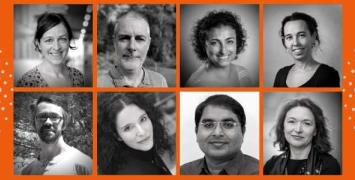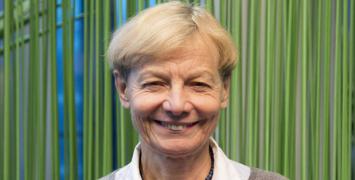
The ERC Scientific Council adopted the Gender Equality Plan for the duration of the Horizon Europe programme. We talked to Prof. Barbara Romanowicz, member of the Scientific Council and Chair of its Gender Issues Working Group.
The ERC Scientific Council has recently adopted its Gender Equality Plan for 2021-2027. The first Plan was already in place in 2008. What has the ERC achieved so far?
The main achievement of the ERC since the first Gender Equality Plan is the equality in success rates for female and male applicants to ERC calls.
The main achievement of the ERC since the first Gender Equality Plan is the equality in success rates for female and male applicants to ERC calls.
In fact, equality has been reached in the last two years. Moreover, comparing the statistics for the 7th Framework Programme (FP7) and Horizon 2020 (H2020), the percentage of women applicants - while still lower than men - increased from 25% on average in FP7 to 28% in H2020. At the same time, the percentage of female grantees has grown from 20% to 27%. The ERC has also increased female representation in its Executive Agency, Scientific Council, and in its review panels.
What measures were decisive in getting these results? Was the ERC helped incidentally by a general trend of growing participation of women in research?
The ERC is widely cited as an example of success in a complex environment. Success rate in grant competitions is influenced by many factors. There may be bias, including unconscious bias, in the evaluations. Female applicants do not emphasise their achievements as strongly as male applicants. Finally, there is the burden of childbearing and care of sick relatives that often slow down women’s scientific careers. That’s why the ERC have been addressing all these aspects. It instituted extensions of eligibility for women with children, modified CV templates for applicants, it introduced anti-bias briefings for the members of evaluation panels, and it communicated to encourage female applicants. Of course, there may also be a positive trend out there, but its contribution is likely minor given that the actual pool of qualified female applicants has not changed much over the last 15 years. That is a rough assessment based on analyses of the SHE figures conducted by the ERC.
What we can reasonably expect from the ERC in the area of gender equality in research? After all the ERC is an important actor but by far not the biggest in Europe? What’s your ambition for 2027?
Maintaining the balance in success rates is going to require sustained monitoring and awareness efforts about biases at all levels. One of the main challenges is the limited pool of female applicants, which is no different from other programs in the EU. This is a much more general societal problem that is mostly beyond the reach of ERC, and it needs to be addressed at a much earlier stage in educational systems.
Where we hope to advance in the next few years is understanding what makes highly qualified women, who are already in that pool, not apply for ERC grants, and then developing targeted encouragement actions for them. Where we hope to advance in the next few years is understanding what makes highly qualified women, who are already in that pool, not apply for ERC grants
Some people say we can’t wait for things to improve - e.g., small and only slowly growing share of women applicant in some countries and disciplines - and that the ERC has to take some radical action and show a good example. Would you agree?
 Barbara Romanowicz
Barbara Romanowicz
The ERC has been showing a good example in the areas which are within its capabilities and will strive to sustain that, but its scope of action is limited. The pool of applicants is out of the ERC's control and biases are widespread, well beyond its sphere of influence. The ERC may achieve more by teaming up with other organisations and institutions that have a better chance to collectively change the European landscape.
There are a few new actions the Scientific Council decided to include in the updated Gender Equality Plan e.g., the “ERC ambassadors”. Could you explain what they are and how they are meant to advance the Scientific Council’s goals.
Indeed, the updated Plan mostly proposes to continue those actions that have been successful until now. One of the new activities is ”ERC ambassadors”. Members of the ERC Scientific Council and volunteer ERC grantees would be empowered to act as ambassadors for equality and inclusion in their scientific area.
Members of the ERC Scientific Council and volunteer ERC grantees would be empowered to act as ambassadors for equality and inclusion in their scientific area In support of this, the ERC will prepare a specific package for these ambassadors to present at forums / events and other opportunities as they arise. This would build upon initiatives already taken on the occasion of scientific meetings addressing gender topics. We also plan to increase the ERC’s efforts to collect gender data in different countries and institutions to better define the existing pool of researchers, so that we can target more precisely our encouragement actions for qualified female scientists to apply for ERC grants.
ERC Gender Equality Plan 2021-27
Gender Issues Working Group
Prof. Barbara Romanowicz’s bio




